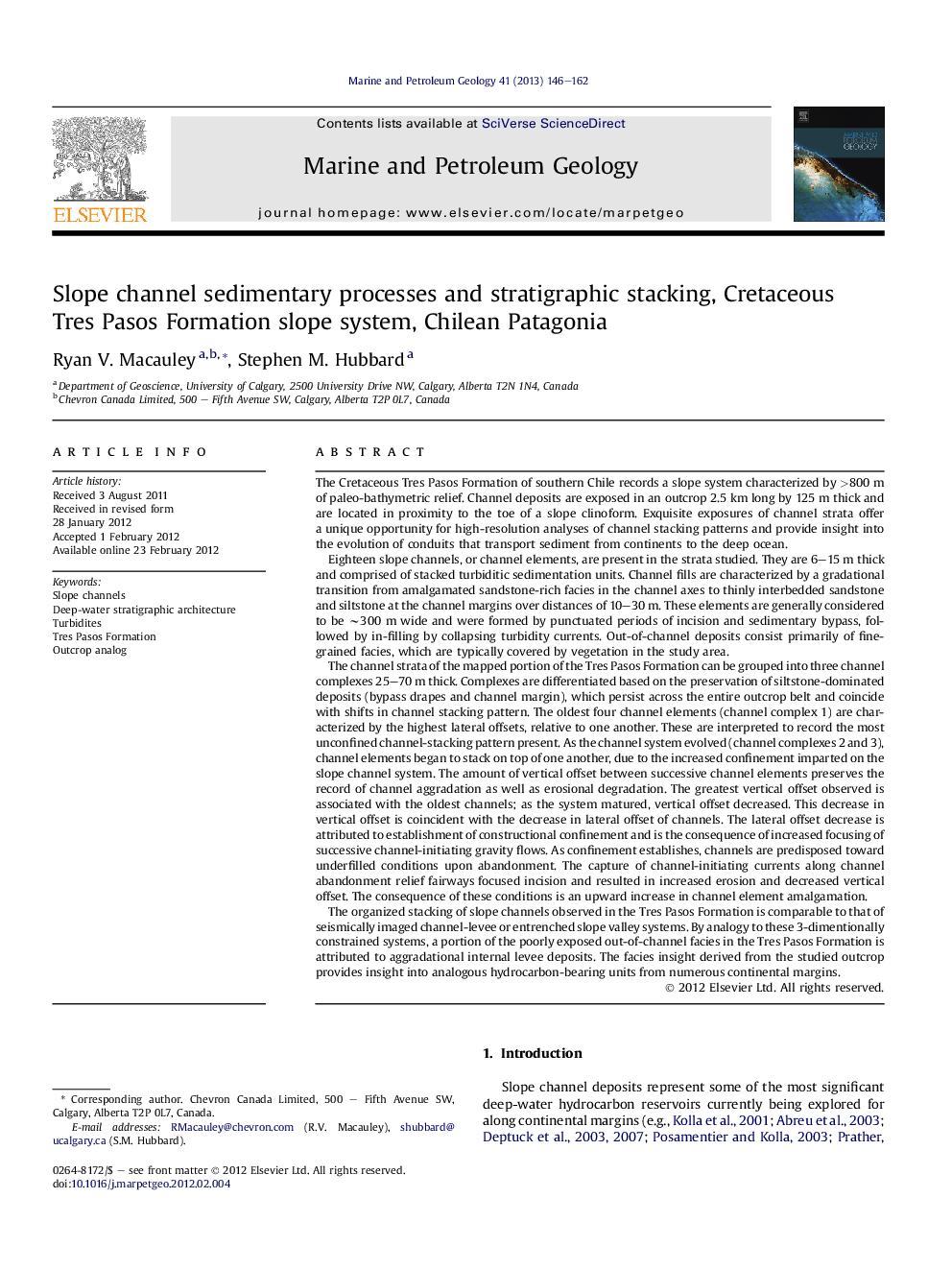| کد مقاله | کد نشریه | سال انتشار | مقاله انگلیسی | نسخه تمام متن |
|---|---|---|---|---|
| 4695775 | 1637183 | 2013 | 17 صفحه PDF | دانلود رایگان |
The Cretaceous Tres Pasos Formation of southern Chile records a slope system characterized by >800 m of paleo-bathymetric relief. Channel deposits are exposed in an outcrop 2.5 km long by 125 m thick and are located in proximity to the toe of a slope clinoform. Exquisite exposures of channel strata offer a unique opportunity for high-resolution analyses of channel stacking patterns and provide insight into the evolution of conduits that transport sediment from continents to the deep ocean.Eighteen slope channels, or channel elements, are present in the strata studied. They are 6–15 m thick and comprised of stacked turbiditic sedimentation units. Channel fills are characterized by a gradational transition from amalgamated sandstone-rich facies in the channel axes to thinly interbedded sandstone and siltstone at the channel margins over distances of 10–30 m. These elements are generally considered to be ∼300 m wide and were formed by punctuated periods of incision and sedimentary bypass, followed by in-filling by collapsing turbidity currents. Out-of-channel deposits consist primarily of fine-grained facies, which are typically covered by vegetation in the study area.The channel strata of the mapped portion of the Tres Pasos Formation can be grouped into three channel complexes 25–70 m thick. Complexes are differentiated based on the preservation of siltstone-dominated deposits (bypass drapes and channel margin), which persist across the entire outcrop belt and coincide with shifts in channel stacking pattern. The oldest four channel elements (channel complex 1) are characterized by the highest lateral offsets, relative to one another. These are interpreted to record the most unconfined channel-stacking pattern present. As the channel system evolved (channel complexes 2 and 3), channel elements began to stack on top of one another, due to the increased confinement imparted on the slope channel system. The amount of vertical offset between successive channel elements preserves the record of channel aggradation as well as erosional degradation. The greatest vertical offset observed is associated with the oldest channels; as the system matured, vertical offset decreased. This decrease in vertical offset is coincident with the decrease in lateral offset of channels. The lateral offset decrease is attributed to establishment of constructional confinement and is the consequence of increased focusing of successive channel-initiating gravity flows. As confinement establishes, channels are predisposed toward underfilled conditions upon abandonment. The capture of channel-initiating currents along channel abandonment relief fairways focused incision and resulted in increased erosion and decreased vertical offset. The consequence of these conditions is an upward increase in channel element amalgamation.The organized stacking of slope channels observed in the Tres Pasos Formation is comparable to that of seismically imaged channel-levee or entrenched slope valley systems. By analogy to these 3-dimentionally constrained systems, a portion of the poorly exposed out-of-channel facies in the Tres Pasos Formation is attributed to aggradational internal levee deposits. The facies insight derived from the studied outcrop provides insight into analogous hydrocarbon-bearing units from numerous continental margins.
► Outcropping units of the Tres Pasos Fm in Chile were deposited on a high-relief slope.
► A 130 m thick channel complex set comprises 3 channel complexes and 18 channel elements.
► More laterally restricted and amalgamated channel elements are prevalent upwards.
► Channel element fill is mostly sandy, with heterolithic bypass drape and margin units.
► The outcrop provides insight into reservoirs on numerous continental margins.
Journal: Marine and Petroleum Geology - Volume 41, March 2013, Pages 146–162
